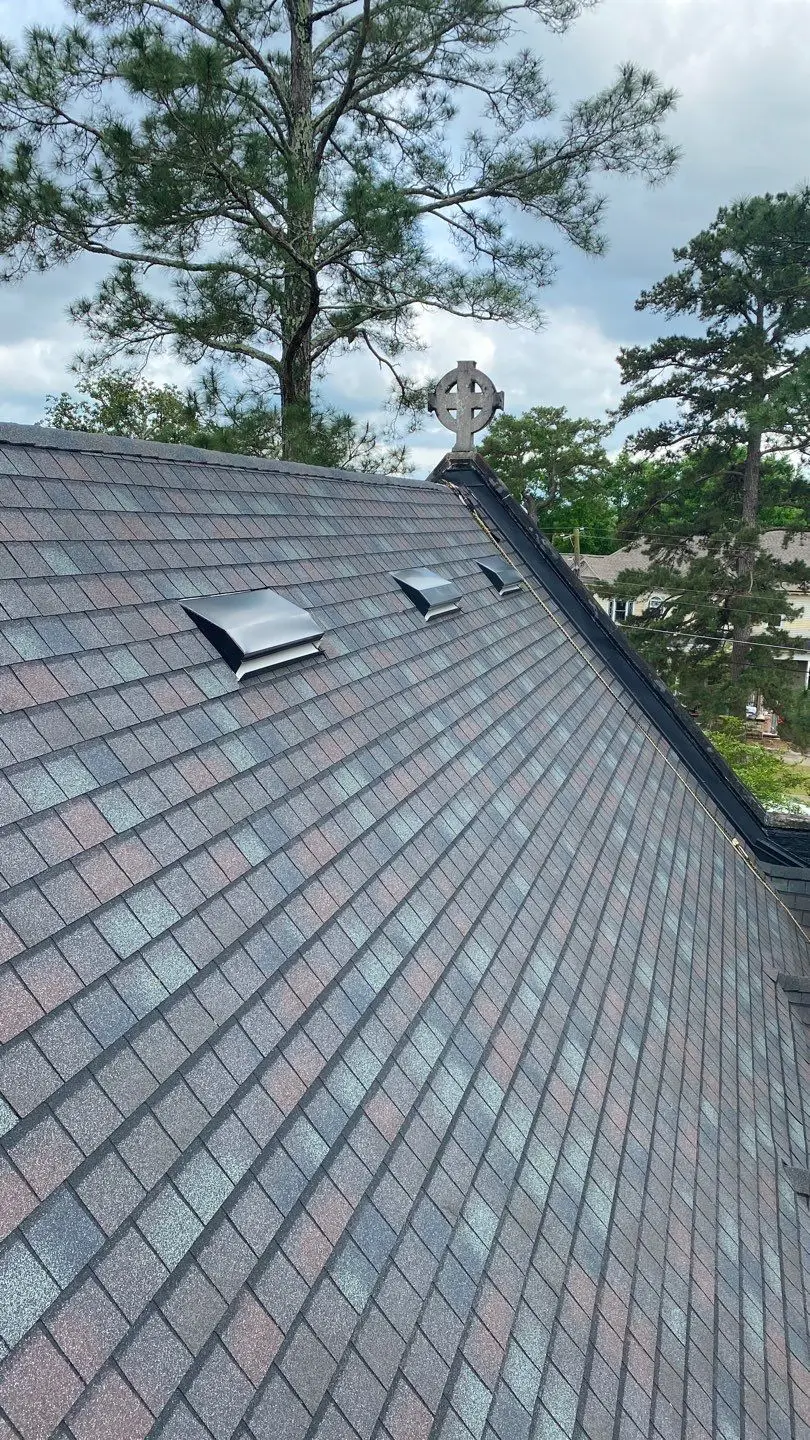Your roof plays a vital role in protecting your home from the elements, but there’s an often-overlooked component that significantly contributes to its health and longevity: attic ventilation. Proper attic ventilation is essential for maintaining the efficiency and durability of your roof, as well as ensuring the comfort of your living space. If your attic is poorly ventilated, it can lead to various roofing issues that can shorten the lifespan of your roof, increase energy costs, and even contribute to mold growth. Why is proper attic ventilation crucial for the overall health of your roof?
1. Prevents Heat Build-Up in the Summer
Summers in Alabama are hot, and attics in Alabama can are even hotter, especially if they’re not adequately ventilated. Without proper airflow, heat from the sun can get trapped in your attic, raising the temperature to extreme levels. This heat buildup can cause several problems:
- Roof Shingle Damage: Asphalt shingles are designed to withstand heat, but prolonged exposure to excessive heat can cause them to deteriorate prematurely. When shingles become too hot, they can warp, crack, and lose their protective granules, making them less effective at shielding your home. Over time, this can lead to roof leaks and a reduced lifespan for your roof.
- Increased Cooling Costs: When your attic is excessively hot, the heat will transfer to the living areas below, causing your air conditioning system to work harder to cool your home, which leads to higher energy bills. By allowing hot air to escape from the attic through proper ventilation, you reduce the heat transfer and lower your cooling costs.
Proper attic ventilation helps regulate temperature, allowing hot air to escape and cooler air to circulate, which in turn prevents excessive heat build-up and preserves the integrity of your roof.
2. Prevents Moisture Accumulation and Mold Growth
In addition to heat, moisture is another significant concern for your attic and roof. When warm, moist air enters the attic from the living spaces below and can become trapped in an inadequately ventilated attic, creating an environment conducive to mold, mildew, and wood rot.
- Mold and Mildew: Moisture accumulation in the attic can lead to the growth of mold and mildew, which can spread to other parts of your home. Mold not only damages your home’s structure but can also pose serious health risks, including respiratory issues, allergies, and asthma.
- Wood Rot: Excess moisture in the attic can also lead to wood rot. Roof decking that becomes damp over time may begin to decay, weakening the structural integrity of your roof.
Proper attic ventilation helps maintain balanced humidity levels by allowing moisture-laden air to escape, preventing the conditions that lead to mold, mildew, and wood rot.
3. Extends the Lifespan of Your Roof
One of the most significant benefits of proper attic ventilation is that it helps extend the lifespan of your roof. By preventing heat buildup and moisture accumulation, ventilation reduces the risk of damage to your roofing materials, ensuring that your roof performs its best for many years. Roofs that suffer from poor ventilation often have a shorter lifespan, leading to more frequent repairs or even the need for a premature roof replacement. When your roof stays cooler and drier, your shingles last longer. Proper airflow helps keep the shingles intact, preventing them from deteriorating too quickly, which means fewer repairs and less frequent replacements.
4. Helps Maintain Balanced Indoor Temperatures
A well-ventilated attic allows for proper airflow, which helps maintain a stable temperature throughout your home.
- Improved Comfort: Proper ventilation helps keep your home cooler in the summer and warmer in the winter by reducing the effects of trapped heat and moisture. This contributes to a more comfortable living environment year-round.
- Energy Efficiency: By reducing the heat buildup in your attic during the summer and preventing moisture accumulation in the winter, attic ventilation helps your HVAC system operate more efficiently. This reduces the strain on your heating and cooling systems and lowers energy consumption, which can lead to savings on utility bills.
5. Improves the Effectiveness of Insulation
Attic insulation works best when combined with proper ventilation. Insulation also helps regulate the temperature in your home by preventing heat from escaping in the winter and keeping it out in the summer. However, insulation alone cannot prevent the buildup of moisture or heat in the attic. If moisture accumulates in your attic, it can damage the insulation, reducing its effectiveness. Damp insulation loses its ability to properly regulate temperatures, leading to energy inefficiency and higher utility bills. By ensuring proper airflow in your attic, ventilation helps keep insulation dry and functioning at its highest potential, maximizing your home’s energy efficiency.
Conclusion
Proper attic ventilation is essential for the health and longevity of your roof. By regulating temperature, controlling moisture levels, and preventing mold, mildew, and wood rot, attic ventilation plays a critical role in protecting your home and enhancing the lifespan of your roofing system. It also helps maintain comfortable indoor temperatures, improves energy efficiency, and prevents costly repairs. If your attic is not properly ventilated, give Guyette Roofing and Construction a call to ensure that your home is adequately protected and your roof remains in top condition for years to come.

